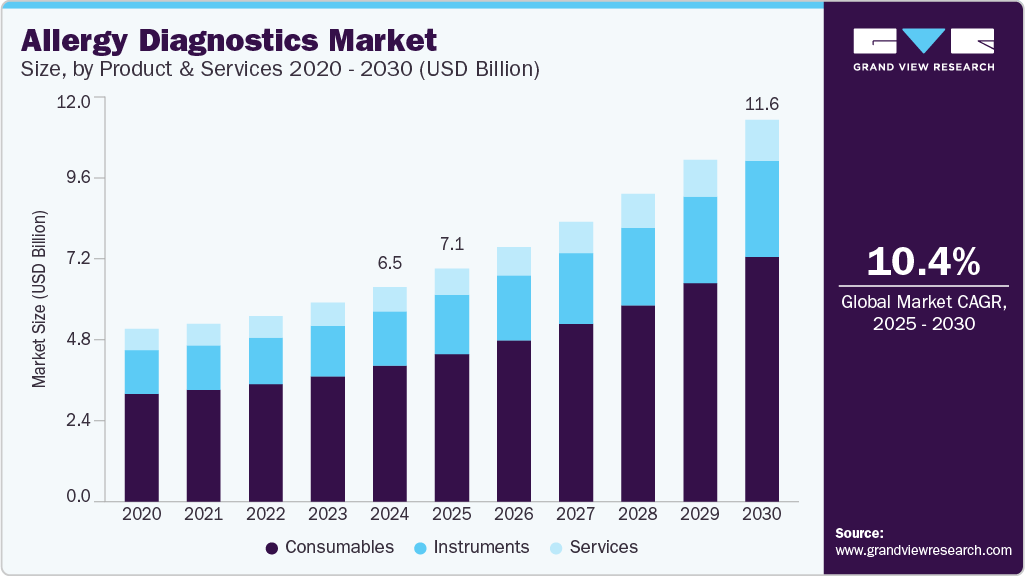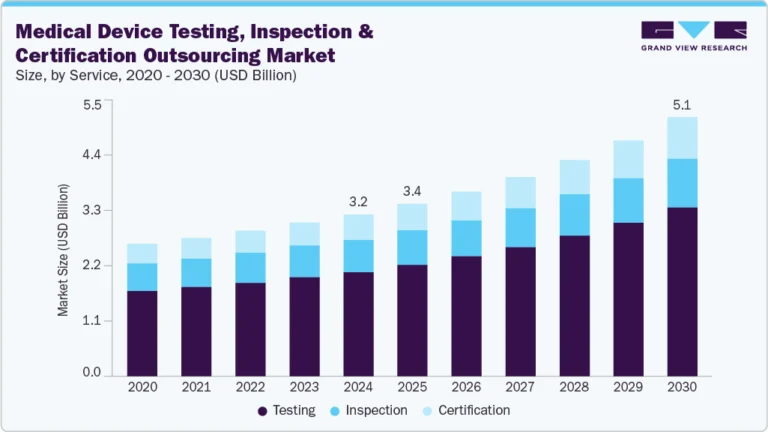Allergy Diagnostics Market Size, Share & Trends Analysis growing at a CAGR of 10.39% from 2025 to 2030

The global allergy diagnostics market size was estimated at USD 6.54 billion in 2024 and is projected to reach USD 11.63 billion by 2030, growing at a CAGR of 10.39% from 2025 to 2030. The market is driven by the rising incidence of conditions such as allergic rhinitis, asthma, atopic dermatitis, and food allergies, which are becoming more common due to environmental pollution, urbanization, and lifestyle changes.
Key Market Trends & Insights
- North America allergy diagnostics market dominated the allergy diagnostics market and accounted for a 36.53% share in 2024.
- The U.S. allergy diagnostics market leads the North America market
- By products and services, consumables held the largest revenue share of 63.14% of the allergy diagnostics market in 2024.
- By allergen, inhaled allergen type accounted for the largest revenue share of the allergy diagnostics market in 2024
- By test type, the in vitro test segment dominated the allergy diagnostics market in 2024.
Market Size & Forecast
- 2024 Market Size: USD 6.54 Billion
- 2030 Projected Market Size: USD 11.63 Billion
- CAGR (2025-2030): 10.39%
- North America: Largest market in 2024
- Asia Pacific: Fastest growing market
Request a free sample copy or view report summary: https://www.grandviewresearch.com/industry-analysis/allergy-diagnostics-market-report/request/rs1
For instance, allergic rhinitis affects about 400 million individuals worldwide annually, impacting around 25% of children and 40% of adults. Furthermore, unhealthy habits, such as smoking, and urbanization are some of the key factors contributing to the increasing incidence of allergic conditions. Increasing incidence of allergies is one of the key factors contributing to the allergy therapeutics market growth. Rising exposure to outdoor and indoor air pollutants and occupational exposure are among high-risk factors causing chronic respiratory diseases. The prevalence of allergies is much higher in the urban population compared to rural areas due to rising exposure to environmental pollutants from industrial activities and urbanization.
According to statistics published by the World Health Organization (WHO) in January 2023, around 1 in 4 children and 1 in 3 adults have a seasonal allergy in the U.S. Nearly 6% of children and adults in the U.S. suffer from a food allergy with the rate being highest among black, Asian, and Hispanic individuals. Similarly, as per data from the Asthma and Allergy Foundation of America, in 2021, in the U.S., about 81 million people were diagnosed with seasonal allergic rhinitis, representing around 26% affected adults and 19% of affected children.






